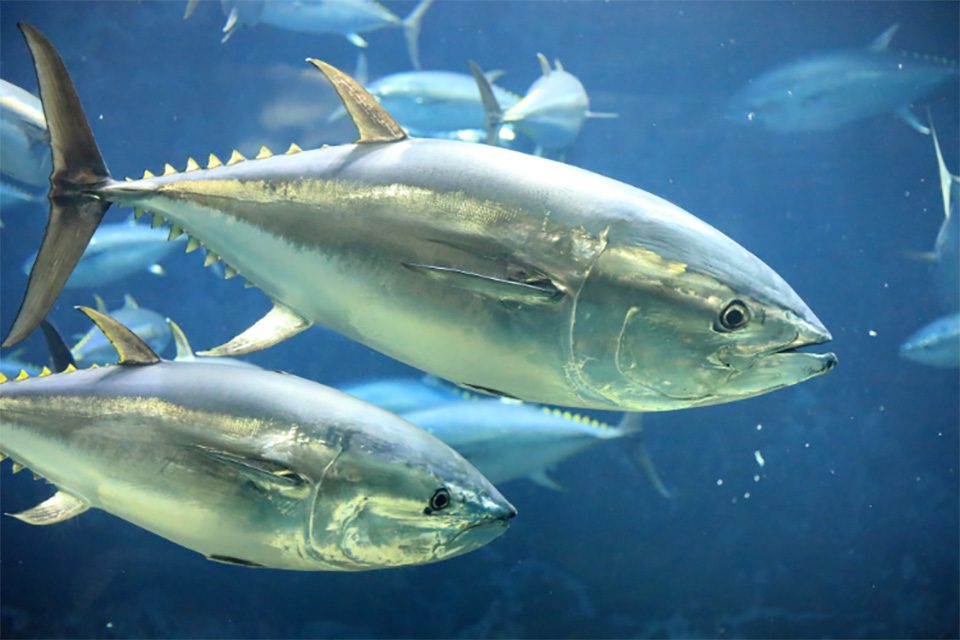NOAA Fisheries is heralding the recovery of Pacific bluefin tuna stocks after the international species rebuilding plan surpassed a major milestone more than a decade ahead of schedule. Management, by the way, includes recreational angler access to the species, with a two-fish daily bag limit in California.
At a May meeting in Victoria, Canada, a new stock assessment was finalized, which confirmed that the stock reached its second rebuilding target in 2021. This goal to reach this target was originally set for 2034. With current management measures in place, the population growth is expected to continue. A NOAA press release even suggested the potential for increased harvest in future years.
“This is an amazingly resilient fish and the new assessment is showing us that. While the population is thriving, ongoing monitoring of data quality is essential to ensure the continued accuracy of the assessment,” said Dr. Huihua Lee, who led the U.S. stock assessment work from NOAA Fisheries’ Southwest Fisheries Science Center. “It also demonstrates the success of coordinated scientific efforts taken by the member countries through the ISC.”
The ISC is the International Scientific Committee for Tuna and Tuna-Like Species in the North Pacific Ocean. Because of the highly migratory nature of Pacific bluefin, international cooperation was required across the Pacific to reverse overfishing for the prized species.
U.S. Vessels Bear the Burden
Pacific bluefin are the largest species of tuna in the Pacific with adults reaching nearly 10 feet in length and 990 pounds. Their habitat spans the temperate waters of the North Pacific—from East Asia to the North American West Coast. They are also among the fastest swimming species on the planet and live an average of 15 years.
In the United States, recreational and commercial vessels primarily land Pacific bluefin tuna using hook and line or purse seines. U.S. commercial catch limits are very low in comparison to other member nations, with a low point of just 114 metric tons allowed in 2018 rising to 720 metric tons for 2024.
In 2022, U.S. commercial fishers harvested 368 metric tons of Pacific bluefin tuna, grossing more than $2.2 million in on-the-dock revenue. This figure was well below the total catch limit of 523 metric tons. The total U.S. fishing effort, both recreational and commercial, represented a small slice of total Pacific bluefin tuna landings that year. According to ISC charts, Chinese and Japanese vessels harvested more than 15,000 metric tons each, while Korea and Mexico reported about 5,000 metric tons each.
When harvested on the West Coast, Pacific bluefin tuna have already traversed the Pacific from their spawning grounds between central Japan and the northern Philippines and in the Sea of Japan. They arrive off the coast of Baja California, Mexico, at around 1 year old. They stay in the open waters off the United States and Mexico, feeding on squid, sardines, saury and herring, among other fish. Once 3 to 5 years old, they migrate back to their spawning grounds—a nearly 6,000-mile journey that takes as little as 55 days for the speedy fish.
International Cooperation Leads to Success
Bluefin are assessed based on their unfished spawning stock biomass—the theoretical amount of fish there would be in the absence of fishing. Overfishing in the late 1990s and 2000s reduced the estimated bluefin biomass to a historic low of 2 percent of its potential unfished level in 2009–2012. This alarming decline prompted multilateral action beginning in 2011 to stem overfishing. The goal was to rebuild to at least 20 percent of the spawning stock biomass by 2034.
Rebuilding happened much faster than expected. With each spawning female laying millions of eggs per batch, Pacific bluefin tuna possess the natural ability to rebound under reduced fishing pressure.
The recent stock assessment shows that in 2022 the number of spawning bluefin reached 23.2 percent of the potential unfished spawning stock. This milestone marks the first time the population has surpassed the associated maximum sustainable yield level for the species. The rapid rebuilding of the Pacific bluefin stock suggests the possibility of increased harvests in future years.
“There is a point where you can find a balance between abundant harvest while also allowing the stock to grow in perpetuity, and we’ve now exceeded that point,” said Celia Barroso, a Fishery Policy Analyst at the NOAA Fisheries West Coast Region.
Looking Forward
There is an international meeting this month in Japan to recommend conservation and management measures for 2025 and beyond. Those recommendations must then be adopted at separate meetings of the different commissions later this year.
